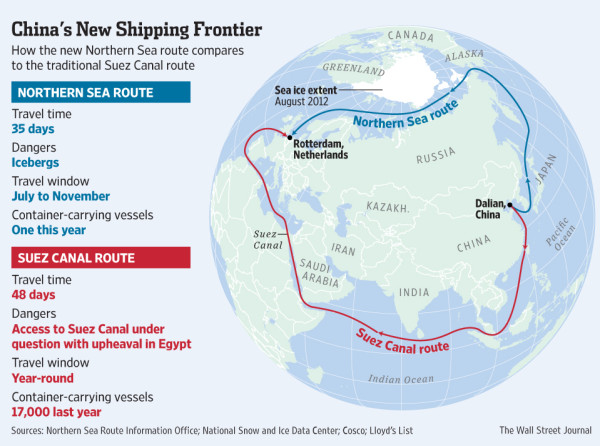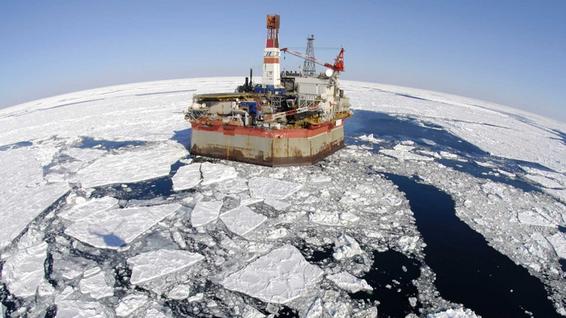In 2007, the issue on Arctic Sovereignty busted on the international media when a Russian submarine planted a flag below the North Pole. Unsurprisingly, these actions did not sit well with the Canadian government, prompting Prime Minister Stephen Harper to assert that “this government has put a big emphasis on reinforcing and strengthening our sovereignty in the Arctic”.
Not much has changed since then. Arctic sovereignty continues to be a divisive issue for countries in the region and with melting ice opening the way to one of the world’s largest deposits of untapped oil, gas, and minerals reserves, it is likely that the debate over the issue will intensify. Yet the Arctic is not valuable solely for its natural resource potential. Melting ice over the years has gradually led to the opening of the Northwest Passage and the Northern Sea Route. Access to these corridors will connect the Pacific Ocean and the Atlantic Ocean, thus allowing goods to be traded over a shorter distance.
Earlier this month, a Chinese cargo ship, the Yong Shenge, became the first Chinese ship ever to reach Europe using the Northern Sea Route. The journey proved how crucial the Arctic can be for trading. The Yong Shenge completed its journey in only 35 days; a staggering two weeks shorter than what it would have taken if the ship had used its traditional trading route via the Suez Canal. By reducing travel time, the Yong Shenge also saves on transportation costs pertaining to fuel consumption. These are, however, not the only factors which make the Northern Sea Route more attractive.

In addition to the shorter distance, the Northern Sea Route is not an active hotspot for piracy. This means that insurance for cargo ships will not cost as much as it does when using the Suez Canal. Furthermore, due to this low risk, China will not need to spend large sums of money to deploy their navy to escort their vessels. however, the greatest setback is that the passage is only available for a short period of time during the year. The route can only be accessed between the months of July and November. During this period, there is either virtually no ice or vessels can safely be escorted by icebreakers. For the remainder of the year, however, ice poses a great risk to vessels, therefore making the route inaccessible. At least until global warming changes the environment in the Arctic drastically, Chinese vessels must continue to rely on the Suez Canal to access European markets.
Another issue with the Northern Sea Route is that it largely falls under Russia’s jurisdiction. Despite the fact that Russia has dramatically increased the number of permits it issues since 2010, China has expressed concern over the possibility that Russia might abuse its monopoly over the route by unreasonably increasing tariffs, thus making the route unprofitable. Perhaps, it is under these circumstances that China joined the Arctic Council – an organization that promotes cooperation, coordination and interaction among Arctic States – as an observer state. Although China lacks voting rights, it will have a platform to raise its concerns and closely monitor the debate over Arctic affairs.
Despite current environmental limitations, we can expect that the Arctic will begin to play a prominent role in trading goods between Asia, Europe and North America in the near future. The Yong Shenge has clearly shown the benefits of using the Arctic as a trade route and its successful voyage would encourage major Asian economies to use the Northern Sea Route. As long as China has a platform to voice its concerns, we can be certain that it will push for policies which will benefit it.




